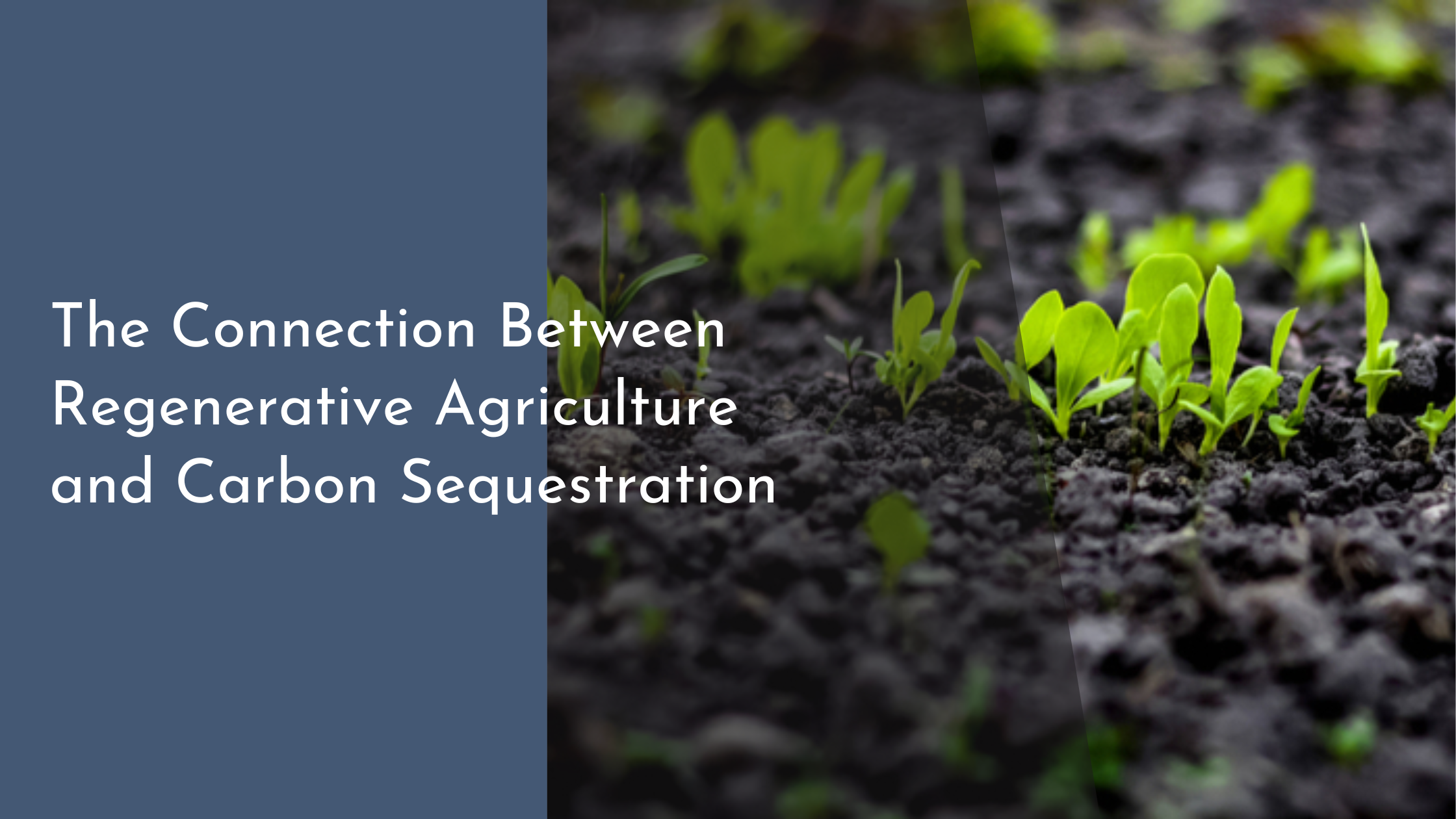The Connection Between Regenerative Agriculture and Carbon Sequestration
Regenerative agriculture is increasingly gaining attention as a sustainable approach to farming that not only improves soil health but also plays a crucial role in combating climate change through carbon sequestration. This innovative method of farming focuses on restoring the natural ecosystem processes within agricultural systems, thereby offering a myriad of environmental benefits. By sequestering carbon dioxide from the atmosphere, regenerative agriculture provides a practical solution to reduce greenhouse gas emissions. In this article, we will explore the basics of regenerative agriculture, the critical role of soil in carbon sequestration, innovative practices that enhance carbon capture, and the additional benefits that extend beyond carbon storage.
Understanding Regenerative Agriculture Basics
Regenerative agriculture is not just a set of practices but a holistic approach that aims to improve the resilience of agricultural ecosystems. At its core, this approach prioritizes the health of the soil, which serves as the foundation for a sustainable farming system. By focusing on practices such as crop rotation, cover cropping, and reduced tillage, regenerative agriculture works to enhance biodiversity, improve water retention, and increase crop yields. These practices collectively contribute to restoring the soil’s natural fertility, thus enabling it to function more effectively and sustainably.
The principles of regenerative agriculture also emphasize the importance of working with nature rather than against it. Unlike conventional agriculture, which often relies heavily on chemical inputs and intensive plowing, regenerative practices nurture the soil’s biological health, allowing it to operate as a self-regulating system. This approach not only reduces the dependency on synthetic fertilizers and pesticides but also minimizes soil erosion, promoting a more sustainable cycle of nutrients and energy. As a result, regenerative agriculture can lead to healthier food production and more resilient agricultural systems, capable of withstanding the pressures of climate change.
The Role of Soil in Carbon Sequestration
Soil plays a pivotal role in carbon sequestration, acting as a natural carbon sink that absorbs carbon dioxide from the atmosphere and stores it in the form of organic matter. Healthy soils, rich in organic content, can sequester significant amounts of carbon, thereby reducing the concentration of greenhouse gases in the atmosphere. As plants photosynthesize, they draw carbon dioxide from the air and convert it into organic carbon, which is then stored in the soil through root systems and decaying plant material. This natural process is a fundamental aspect of the carbon cycle and highlights the importance of maintaining soil health in mitigating climate change.
Moreover, the capacity of soil to sequester carbon is influenced by various factors, including soil type, climate, and land management practices. Regenerative agriculture enhances the soil’s ability to capture and store carbon by promoting practices that increase soil organic matter. Techniques such as agroforestry, integrated livestock management, and the use of perennial crops contribute to deepening root systems and increasing biomass, which in turn boosts the soil’s carbon sequestration potential. Thus, focusing on soil health through regenerative practices not only helps in carbon storage but also enhances the overall productivity and sustainability of agricultural lands.
Innovative Practices Boosting Carbon Capture
Several innovative practices within regenerative agriculture have shown promising results in boosting carbon capture. One such practice is the use of cover crops, which are planted during the off-season to maintain a living root in the soil year-round. Cover crops prevent soil erosion, improve nutrient cycling, and enhance water retention, all of which contribute to a more robust soil ecosystem capable of storing greater amounts of carbon. Additionally, incorporating diverse plant species in cover cropping systems can enhance soil biodiversity and resilience, further optimizing the soil’s carbon sequestration potential.
Another innovative practice is holistic grazing management, which involves strategically rotating livestock to mimic natural grazing patterns. This practice not only prevents overgrazing but also promotes the regrowth of vegetation, improving soil structure and increasing organic matter inputs. By allowing for periods of rest and regrowth, holistic grazing helps build resilient grasslands that can sequester substantial amounts of carbon. Similarly, agroforestry, which integrates trees and shrubs into agricultural landscapes, offers dual benefits of boosting carbon capture while enhancing biodiversity and providing additional income streams for farmers.
Bright Future: Benefits Beyond Carbon Storage
The benefits of regenerative agriculture extend far beyond carbon storage, promising a brighter future for both farmers and the environment. By improving soil health, regenerative practices increase agricultural resilience to extreme weather events such as floods and droughts. This resilience stems from enhanced water retention capacities and improved soil structure, enabling crops to withstand adverse conditions and maintain productivity. Additionally, healthier soils contribute to better crop nutrition, leading to improved food quality and reduced reliance on chemical fertilizers and pesticides.
Moreover, regenerative agriculture supports biodiversity by creating habitats for various flora and fauna, fostering a more balanced ecosystem. This biodiversity not only aids in pest control but also enhances pollination services, leading to increased crop yields. Socially, regenerative agriculture empowers farmers by promoting sustainable practices that reduce input costs and increase profitability. By investing in the health of the land, regenerative agriculture offers a pathway to sustainable food systems that benefit both current and future generations, ensuring a harmonious coexistence with nature.
Regenerative agriculture stands out as a beacon of hope in the fight against climate change. Its focus on restoring soil health and promoting ecosystem balance offers a sustainable path forward, with carbon sequestration serving as a key component of its environmental impact. As more farmers and communities adopt regenerative practices, the potential for reducing atmospheric carbon and building resilient agricultural systems grows exponentially. Beyond its climate benefits, regenerative agriculture promises improved food security, increased biodiversity, and enhanced rural livelihoods, making it a vital strategy for a sustainable future.

